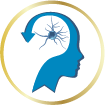Designing Accessible Educational Materials: Creating Resources to Promote Learning for Everyone
As technology advances, so does the importance of accessibility in educational materials. In an increasingly digital world, it is more important than ever to ensure that educational materials are accessible to all learners. Accessible educational materials (AEM) are designed to be used by people with disabilities and provide an equal opportunity for learning. AEM can include websites, text, images, videos, and other materials that are designed to be used by people with disabilities.
The goal of AEM is to make sure that everyone has the same opportunities to learn, regardless of their physical or cognitive abilities. AEM also makes learning more efficient by providing materials that are easier to understand and use.
What is Accessible Educational Material?
AEM is any material or resource that is designed to be accessible to people with disabilities. This includes materials such as websites, text, images, videos, and other materials. AEM is designed to be used by people with disabilities in order to provide an equal opportunity for learning.
AEM is designed to be usable by all learners, regardless of their physical or cognitive abilities. It can include text, images, videos, and other materials that are designed to be used by people with disabilities. It can also include resources such as accessible fonts, high contrast colors, and alternative formats such as audio and Braille.
Benefits of Accessible Educational Materials
AEM provides a number of benefits to learners with disabilities. It ensures that everyone has the same opportunities to learn, regardless of their physical or cognitive abilities. AEM can also make learning more efficient by providing materials that are easier to understand and use. Additionally, AEM can reduce the need for additional accommodations, such as readers or interpreters, which can help reduce costs associated with providing educational materials.
AEM can also help to create a more inclusive learning environment. By providing materials that are accessible to all learners, it can help to create an environment that is more welcoming and inclusive for all students.
Creating Accessible Educational Materials
Creating AEM is an important part of making sure that everyone has the same opportunities to learn. There are a number of steps that can be taken to create AEM.
Designing for Accessibility
Designing materials with accessibility in mind is an important part of creating AEM. This includes considering factors such as font size, color contrast, and text layout. Additionally, materials should be designed to be used by people with disabilities, such as providing alternative formats such as audio or Braille.
Testing for Accessibility
Once materials are designed, they should be tested to make sure that they are accessible to all learners. This includes testing the materials with assistive technologies such as screen readers and magnifiers. Additionally, it is important to make sure that the materials are usable by people with disabilities, such as those with visual impairments or motor impairments.
Providing Support
In addition to designing and testing materials, it is important to provide support to learners with disabilities. This can include providing additional accommodations such as readers or interpreters. Additionally, it is important to provide resources to help learners with disabilities use the materials, such as tutorials or FAQs.
Conclusion
Designing and providing AEM is an important part of making sure that everyone has the same opportunities to learn. AEM can help to create an inclusive learning environment and can provide a number of benefits to learners with disabilities. By taking the steps to create and provide AEM, it is possible to ensure that everyone has the same opportunities to learn.












Leave a comment